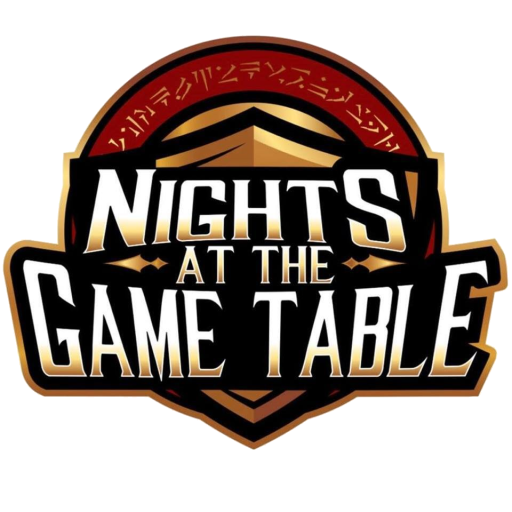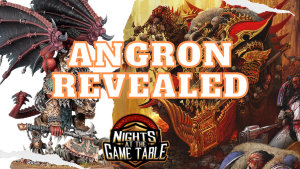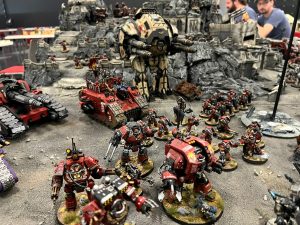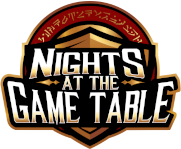Welcome to Warhammer Tactics! Today, we’re going to go over some theory crafting relating to list construction. Specifically, we’re going to cover the pros of taking mediocre models with low points costs, and why you should reconsider them in your list construction. Most armies in 40K have access to units that, by and large, don’t do much more than just occupy physical space. Chaos Cultists, Kroot, Gretchin, the list goes on. For the most part, these kinds of units have no offensive or defensive value, other than perhaps Cultists thanks to how Chaos operates on the table. This makes their value at first glance rather dubious, since you’re mostly just throwing points away on cheap bodies.
 However, it’s important to remember that 40K isn’t a game about raw offensive and defensive value. Yes, being able to kill your opponent faster or mitigating damage better does greatly help when it comes to winning games of 40K. But, in most missions we don’t win by killing things. Rather, we win by controlling objectives that are placed on the table, with combat being our avenue of fighting for control of these objectives. In truth, 40K is largely a game about board control much in the same way that Chess is about controlling your opponent’s options to force a checkmate, despite much of the gameplay involving taking pieces from one another. This leads us to the most straightforward advantage of cheap units, which is backfield objective holders. We can invest a small amount of points to hold an extra objective in a corner of our deployment zone, while the rest of our fire support castles up on another section of our deployment zone, ideally near a second objective.
However, it’s important to remember that 40K isn’t a game about raw offensive and defensive value. Yes, being able to kill your opponent faster or mitigating damage better does greatly help when it comes to winning games of 40K. But, in most missions we don’t win by killing things. Rather, we win by controlling objectives that are placed on the table, with combat being our avenue of fighting for control of these objectives. In truth, 40K is largely a game about board control much in the same way that Chess is about controlling your opponent’s options to force a checkmate, despite much of the gameplay involving taking pieces from one another. This leads us to the most straightforward advantage of cheap units, which is backfield objective holders. We can invest a small amount of points to hold an extra objective in a corner of our deployment zone, while the rest of our fire support castles up on another section of our deployment zone, ideally near a second objective.
Luckily, these units are capable of far more than just sitting in the backfield. For most armies, these sorts of units also tend to be Troops choices. That automatically gives them some value in a more abstract sense, as Troops are the single biggest gateway to accessing more command points. Outriders, Vanguards, and Spearhead Detachments don’t require troops, but only provide 1 CP. Patrols have a very low requirement to create, but provide no CP. The main Detachments that actually provide command points are Battalions and Brigades. Battalions require 3 Troops choices, and Brigades a whopping 6. And although it’s true that Brigades also require lots of other selections, Troops are still the most universal requirement to completing these detachments. Since these units tend to be very cheap points wise, they also provide a gateway to extra Command Points by enabling you to cheaply fill an extra Detachment, or upgrade something like a Spearhead into a Battalion.
For example, most Imperium players will know that you can take a Battalion of Imperial Guard for less than 200 points. This provides you with about 30 bodies that you can use to do what you like, and then fuel your main army’s Stratagems with the bonus 5 CP. Although the 30 Guardsmen you’ve included in your list probably won’t carry the game, an extra 5 CP for an army like Custodes or Blood Angels definitely can make the difference between a win and a loss.
In addition to what we’ve covered so far, some of these units also have above average movement options. Kroot get a free move at the beginning of the game, Nurglings have extremely liberal deployment options, Cultists have access to Tides of Traitors, so on and so forth. Even Space Marine Scouts find themselves on this list, as they have the same very liberal options for deployment that Nurglings have. Although it’s true that they aren’t as cheap as many of the other models that we have discussed, they are practically the cheapest model in the Space Marine lineup, making them the closest Space Marine equivalent.
This extra movement provides a few benefits. The most apparent is that you’ll start the game controlling the midfield, which for some missions will immediately translate into extra Victory Points, especially in ITC or Maelstrom of War games. However, they can also disrupt your opponent’s reserves. If you use your extra movement to get partway up the table and then out of line of sight, you can create large zones that your opponent can’t deepstrike into.
Theoretically, you can close to 40” in a given direction as a no go zone. This is because your opponent can’t drop 9” behind your main army, 9” in front of your main army, and 9” behind and in front of your more forward units. If these line up perfectly, you have 36” of coverage, plus whatever space the physical model take up. This is obviously a best case scenario, but even in more realistic terms you can greatly reduce the effectiveness of your opponent’s reserves, or any Stratagems and Psychic Powers that let him redeploy units on the table, at least temporarily.
 As a final extra bonus, you can use these units to block off your opponent’s movement options. Movement is the first phase of every turn. In addition, players can’t move within 1” of enemy models during the Movement Phase. Taking this information together, this means you can use cheap units to temporarily prevent the movement options of your opponent by occupying the paths they would need to take to reach your army.
As a final extra bonus, you can use these units to block off your opponent’s movement options. Movement is the first phase of every turn. In addition, players can’t move within 1” of enemy models during the Movement Phase. Taking this information together, this means you can use cheap units to temporarily prevent the movement options of your opponent by occupying the paths they would need to take to reach your army.
Obviously, the odds that your units that you have moved in the way of your opponent actually surviving is usually zero, but this can provide you an extra turn to remove the threat or outmaneuver it. Just be careful about how you go about this, as if you aren’t careful and your opponent is particularly knowledgeable regarding close combat, he can generate more movement than he would have normally had thanks to how freeform movement is in the close combat phase.
On the flip side, if your opponent is ferrying units in transports instead of just running them across the board, you can actually stun them for even longer than normal with a careful charge. If you can surround the transport, you can force your opponent to disembark it’s cargo to clear you out, as most transports have no way to realistically threaten anything. After your opponent disembarks and kills your unit, he’ll have to spend his next turn embarking and covering the rest of the distance. On the turn after that, he can finally disembark near your army, assuming you haven’t done anything else to slow him down or stop him. This is a total of a two turn delay, which can easily make or break a game.
 Of course, these units are not without their weaknesses. Most of them have no real means to actually inflict damage or take a hit, and they have serious vulnerability to Morale Tests. However, despite these weaknesses, these units are often some of the most underrated. Try adding in one or two of these units in your list, and play a few games with them. The extra board and objective control that they provide will surprise you, once you get used to using them.
Of course, these units are not without their weaknesses. Most of them have no real means to actually inflict damage or take a hit, and they have serious vulnerability to Morale Tests. However, despite these weaknesses, these units are often some of the most underrated. Try adding in one or two of these units in your list, and play a few games with them. The extra board and objective control that they provide will surprise you, once you get used to using them.
And that actually wraps us up for today! Today’s topic was rather brief, but hopefully it encourages you to experiment a bit with your list construction. Make sure to check out next week’s article, where we’re going to look at how you can use the movement phase to control zones of the table!
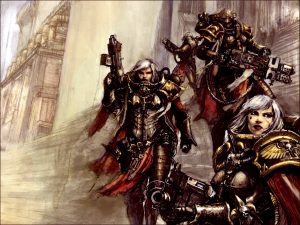
Warhammer 40k Winning Lists June 11th Edition
With summer in full swing, we see a refreshing number of tournaments kick back up globally, ranging from 3 to 7 rounds
